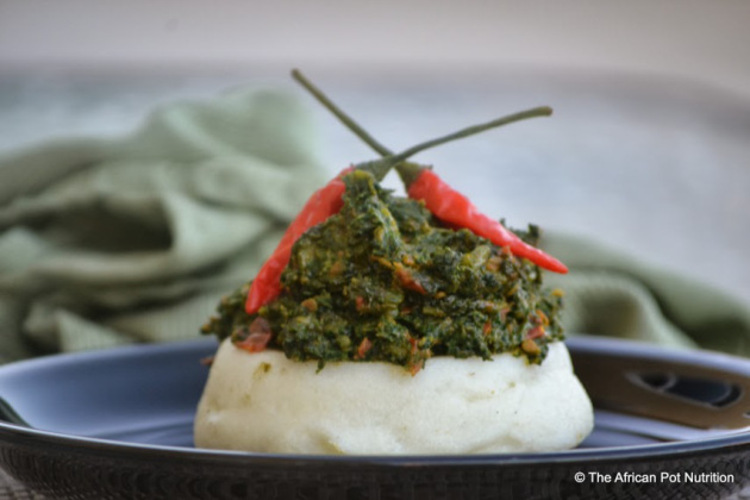
The Sunday Mail

Praxedis Dube, Rico Ihle and Wim Heijman —
Traditional leafy vegetables are native to a particular region or introduced to the region from another geographical area, but have been used over a long period of time.
One writer lists 83 species used in Zimbabwe, including pigweed, poor man’s spinach, black jack, spider flower, okra, jute, pumpkin leaves and cowpea leaves.
The most preferred are spider flower, pumpkin leaves, cowpea leaves and okra. Black jack is coming in as another important traditional leafy vegetable consumed in Harare, with many people preferring it dried. Why is it healthy and beneficial to eat traditional leafy vegetables?
Both poverty and food security are major developmental problems faced by Zimbabwe. The Food and Agriculture Organisation reported that 72 percent of Zimbabwean population live below the national poverty line, living on less than US$1,25 per day.
Dietary diversity is generally poor in these categories and consumption of protein is insufficient, exacerbating chronic under-nutrition.
FAO reported that only 11 percent of Zimbabwean children between six and 23-months-old receive a minimum acceptable diet and a third of Zimbabwe’s children are stunted. Traditional leafy vegetables contain vitamins and minerals that are lacking in many of the major staple foods consumed in Zimbabwe.
In principle, incorporating these vegetables to the Zimbabwean daily diet can help not only nourish the undernourished population, but also make marginal lands more productive and lift people’s incomes.
Traditional leafy vegetables are often tolerant of environmental stresses, are nutritious and contain a vast range of phytochemicals.
Even in the dry areas of Binga, where environmental extremes limit options, we observed a large diversity of these plants eaten by people in the blistering hot semi-arid climate. People living in these marginal environments could benefit from its production, marketing and consumption.
These vegetables are excellent sources of vitamins A and C, iron, as well as protein, minerals and fibre, and can therefore be important for people without access to meat or other sources of protein.
Some are known to be rich in lysine, an essential amino acid that is lacking in diets based on cereals, while others have medicinal properties. Their consumption is important to improve nutrition and help to mitigate and alleviate HIV/Aids including treatment of diabetes, high blood pressure and other common ailments.
Over the last decade, the vegetables have featured in both formal and informal markets in urban areas of Zimbabwe increasingly.
Before they were found only at big market places like Mbare Musika and in a few markets located in different residential places and were mostly bought and consumed by expecting women.
But since then they have become a common occurrence in most supermarkets, where they occupy a small part of the shelves. Harare supermarkets as well as green groceries now stock and sell various types of them.
How important are traditional leafy vegetables in regards to food and nutrition security? The vegetables are grown and traded locally, and have the potential to contribute to accomplish the goal of food sovereignty.
One local newspaper reported that Zimbabweans have spent over US$15 million on imported vegetables and citrus commodities during the first two months of 2016, despite the fact that Zimbabwe is a low-income country.
There are different market channels of traditional leafy vegetables in Zimbabwe. For instance, in Harare, they can be found in streets, at Mbare Musika and in green groceries and supermarkets.
The prices vary between these markets (for spider flower US$1 per cup to US$2,35 per 60g), cheapest being Mbare Musika, the green grocers, and much more expensive in leading supermarkets.
Besides, the Hararean markets, the vegetables can be found in supermarkets and city council markets dotted around the country. In the rural communities they can be sold, exchanged or given for free.
The prices are normally the same, where the quantities are differing. For example, for spider flower US$1 for two to three cups in rural communities. Generally, the quantities are reduced as we move far away from the season.
Traditional leafy vegetables are usually regarded as an accompanying dish (ie they are cooked to accompany sadza).They can be served as side dishes, which is commonly done in urban areas or as main dishes in rural areas and by poor urban dwellers. In the latter case, the vegetables are prepared and served with sadza without meat or bean dishes.
Common preparation methods for traditional leafy vegetables include boiling for 30 minutes for spider flower, throwing away the water during the boiling process then add other ingredients (oil or peanut butter, tomatoes and spices) or mix them with meat before serving.
Through this prolonged cooking time and throwing away the water during the boiling process, probably valuable nutrients might be lost.
The main production period of traditional leafy vegetables is during rainy season (October to March). Both fresh and processed traditional leafy vegetables are marketed.
Processed traditional leafy vegetables are dominate during the dry season (June to September). Drying as a way of preservation is common in Zimbabwe.
Traditional leafy vegetables are sun dried, leaves are boiled or blanched before drying, with others twisted during the drying process.
The authors are affiliated with the Department of Social Sciences, Agricultural Economics and Rural Policy Group at Wageningen University in The Netherlands. Feedback: [email protected]



